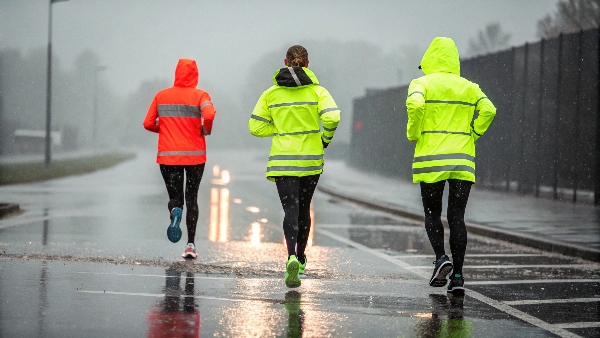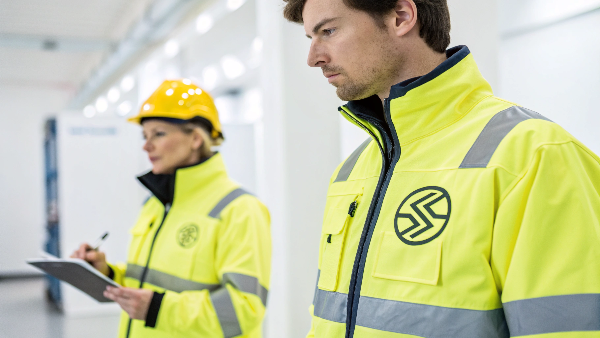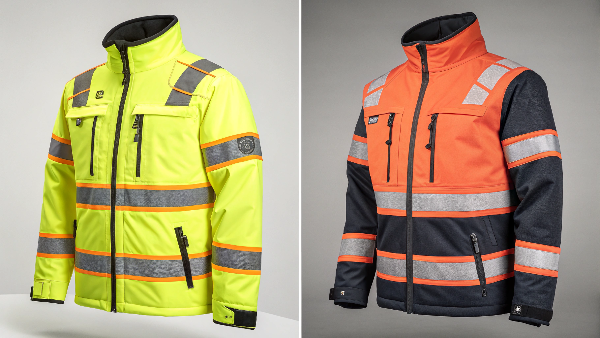Working outdoors exposes people to risks, especially in low light. An accident can change lives forever. Understanding high visibility clothing classes helps choose the right protection and keep workers safe.
High-visibility clothing has specific classes, mainly Class 1, Class 2, and Class 3. These are based on the amount of bright background material and reflective tape used. The class needed depends on the work environment's risk level, following standards like ANSI/ISEA 107.
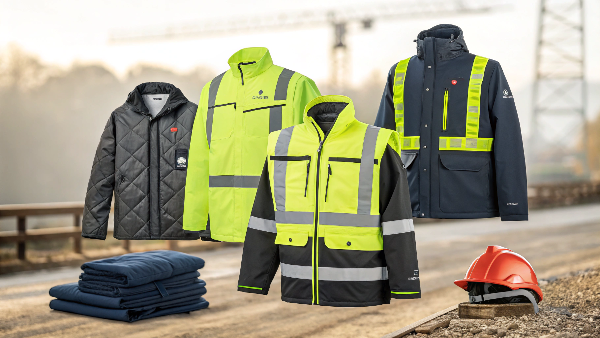
As a manufacturer since 2007, we at Vissafety know how important these standards are. High visibility clothing isn't just about meeting rules. It's about bringing workers home safely. We've seen how the right gear gives peace of mind to workers and their families. It also protects our clients, like Danny Cheng, from the risks of non-compliance. These classes provide a clear system. They help everyone choose the correct level of safety wear for different job sites. Let's look closer at these classes.
What are the 3 classes of high-visibility clothing?
Choosing the right safety vest can seem confusing. Picking the wrong class offers poor protection. Learning the three main classes helps you make the right safety choice every time.
The ANSI/ISEA 1071 standard defines three main classes: Class 1, Class 2, and Class 3. Each class requires minimum amounts of fluorescent background material and retroreflective tape. Class 3 gives the most visibility for the highest-risk jobs.
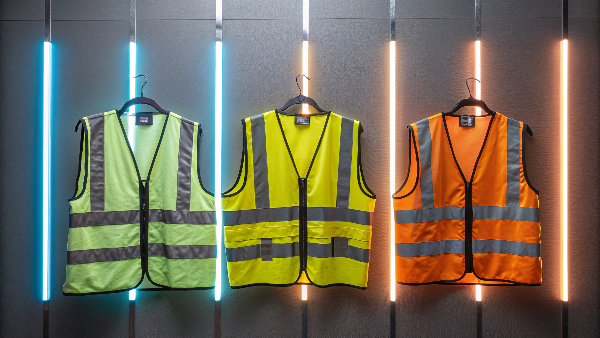
Understanding these three classes is fundamental. Think of them as levels of protection. Each level is designed for a different work situation. The main goal is conspicuity – making the wearer easily seen. The ANSI/ISEA 107 standard sets the rules in North America, similar to EN ISO 20471 in Europe. These rules specify how much bright material and reflective tape is needed for each class.
Here's a simple breakdown of their general purpose:
| Class | Risk Level | Typical Environment | Visibility Requirement |
|---|---|---|---|
| Class 1 | Low | Off-road, low traffic speeds (<25 mph) | Minimum |
| Class 2 | Moderate | Roadways (>25 mph), poor weather, low light | Medium |
| Class 3 | High | High-speed roadways (>50 mph), complex sites | Maximum |
As a manufacturer, we produce garments meeting all these class requirements. We work closely with clients like Danny to ensure the products they order match the specific hazards their customers face. Choosing the correct class is the first step in ensuring worker safety and meeting regulations. It prevents accidents and builds trust.
How many classes are there to high-visibility clothing2?
You might wonder exactly how many safety levels exist. Getting the system wrong can cause compliance problems. It's important to know the specific classes defined by safety standards.
The main standard, ANSI/ISEA 107, outlines three primary performance classes3: Class 1, Class 2, and Class 3. It also defines garment Types (O, R, P) and a separate Class E for pants or shorts.
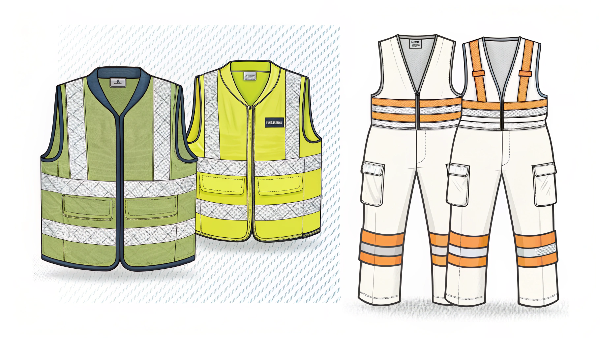
So, while there are three main performance classes (1, 2, 3), the standard is a bit more detailed. It also includes:
- Garment Types: These specify the intended work environment.
- Type O (Off-Road): For workers not exposed to roadway traffic. Often corresponds to Class 1 garments. Example: Warehouse workers.
- Type R (Roadway): For workers exposed to traffic and roadway hazards. Often corresponds to Class 2 or Class 3 garments. Example: Road construction crews.
- Type P (Public Safety): For emergency and public safety personnel, with additional requirements for visibility and identification. Often corresponds to Class 2 or Class 3. Example: Police officers, firefighters.
- Class E (Ensemble): This class applies only to high-visibility pants, bib overalls, or shorts when worn without a Class 2 or Class 3 top. These garments don't meet a numbered class on their own. However, when a Class E item is worn with a Class 2 or Class 3 top, the entire outfit is classified as a Class 3 ensemble. This provides flexibility in achieving maximum visibility.
Here is a table summarizing these Types and Class E:
| Category | Designator | Description | Typical Use Case |
|---|---|---|---|
| Type | O | Off-Road Use | Warehouse, Parking Attendants |
| Type | R | Roadway Use | Construction, Utility Workers |
| Type | P | Public Safety Use | Emergency Responders, Police |
| Class | E | Pants, Bibs, Shorts (Not rated alone) - Creates Class 3 when worn with Class 2/3 top | Enhancing overall visibility level |
Understanding these distinctions helps designers like Jacky specify the right product features. It also helps buyers like Danny ensure they order fully compliant gear for different sectors like construction or logistics.
What is class 1 high-visibility clothing?
Do you need basic visibility for low-risk work areas? Using gear with too much visibility can be costly and not needed. Class 1 provides the minimum visibility required for safety4.
Class 1 high-visibility clothing5 provides the lowest recognized level of conspicuity. It is intended for workers in low-risk environments, often off-road, away from traffic, or where vehicle speeds are consistently below 25 mph (40 km/h).
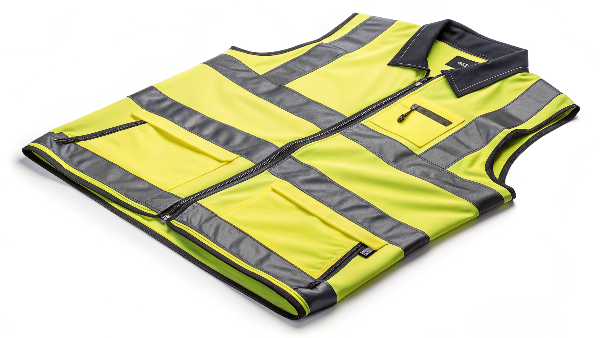
Class 1 is the starting point for high-visibility protection. It's designed for situations where workers need to be distinguished from a simple background, but the risks from moving vehicles are low. Think about environments where workers are well separated from traffic flow or where vehicle speeds are very slow.
Key characteristics and uses:
-
Environments: Warehouse operations, parking lot attendants, roadside "cart collectors," workers retrieving shopping carts, some delivery drivers visiting sites.
-
Traffic Conditions: Areas where traffic speeds do not exceed 25 mph. Workers should be able to give their full attention to traffic.
-
Material Requirements (ANSI/ISEA 107): Class 1 requires the smallest amount of high-visibility material.
Material Type Minimum Area (Square Inches) Minimum Area (Square Meters) Background Material 217 0.14 Retroreflective Material 155 0.10 -
Garment Examples: Simple vests, harnesses.
-
Limitations: Class 1 is not suitable for work near roadways, in poor light conditions, or where workers' attention might be diverted from traffic. It simply doesn't offer enough visibility for those higher-risk scenarios.
We produce Class 1 items, but always stress their limitations to clients. It’s crucial for safety managers to correctly assess the work environment risk. For many of Danny's clients in construction and logistics near active roads, Class 1 is insufficient.
What is Class 2 high-visibility clothing?
Are your workers near traffic moving faster than 25 mph or working in bad weather? Class 1 protection is not enough. Class 2 provides better visibility for these moderate-risk situations.
Class 2 high-visibility clothing6 offers superior visibility compared to Class 1. It's required for workers needing greater visibility in poor weather conditions or in work environments with traffic risks exceeding 25 mph (40 km/h).
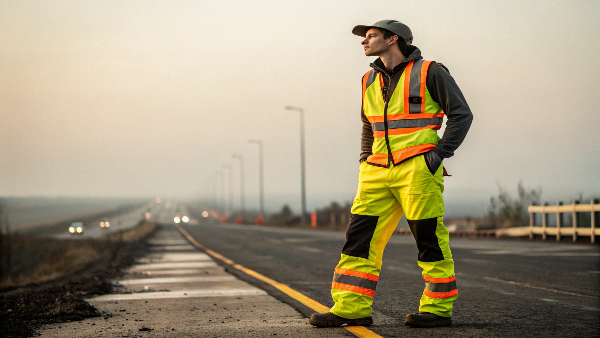
Class 2 represents a significant step up in visibility. It's the most commonly used class for many workers exposed to traffic hazards. This level ensures workers are more easily seen, especially when backgrounds are complex or light conditions are poor (dawn, dusk, rain, fog).
Key characteristics and uses:
-
Environments: Roadway construction where traffic is between 25-50 mph, utility workers, survey crews, railway workers, school crossing guards, airport ground crews, law enforcement directing traffic.
-
Conditions: Tasks near traffic, inclement weather, low light. Workers might have tasks that divert attention from traffic.
-
Material Requirements (ANSI/ISEA 107): Class 2 demands substantially more visible materials than Class 1.
Material Type Minimum Area (Sq Inches) Minimum Area (Sq Meters) Comparison to Class 1 Background Material 775 0.50 ~3.6x more Retroreflective Material 201 0.13 ~1.3x more -
Garment Examples: Standard safety vests, t-shirts, some jackets. Typically Type R (Roadway) or Type P (Public Safety).
-
Benefit: Provides 360-degree visibility7, making workers noticeable from all directions.
Many of our clients, like Danny supplying the construction sector, primarily order Class 2 garments. They offer a good balance of visibility, comfort, and cost for a wide range of roadway-related jobs. We ensure our Class 2 products meet the exact material and design requirements of ANSI/ISEA 107, giving Danny and his customers confidence in their safety gear.
What is class 3 level 2 high visibility safety apparel?
Do workers face high-speed traffic or work in very low light? Using anything less than maximum visibility is extremely dangerous. Class 3 apparel is designed for these highest-risk situations.
Class 3 high-visibility apparel provides the highest level of visibility under the ANSI/ISEA 107 standard. It's for workers facing serious hazards, such as high-speed traffic (>50 mph), complex backgrounds, or tasks demanding full attention away from traffic.

Let's clarify the term "Class 3 Level 2". Class 3 refers to the highest garment visibility class in ANSI/ISEA 107. "Level 2" typically refers to the performance level of the retroreflective material used on the garment, also defined within the standard. Level 2 reflective material is brighter than Level 1 when reflecting light back to the source (like headlights). Most safety garments use Level 2 material. So, "Class 3 Level 2" usually means a Class 3 garment using Level 2 reflective tape.
Key characteristics of Class 3:
-
Environments: High-speed roadways (highway construction, flagging), emergency response scenes, complex construction sites, anywhere workers must be seen clearly from maximum distance.
-
Conditions: Traffic speeds exceeding 50 mph, very low light, high task loads distracting workers.
-
Material Requirements (ANSI/ISEA 107): Class 3 requires the largest amount of visible materials, ensuring maximum body outline recognition.
Material Type Minimum Area (Sq Inches) Minimum Area (Sq Meters) Comparison to Class 2 Background Material 1240 0.80 ~1.6x more Retroreflective Material 310 0.20 ~1.5x more -
Garment Examples: Jackets, coveralls, full suits. Critically, Class 3 garments must have reflective material on the sleeves and legs (if trousers/coveralls). A Class 2 vest worn with Class E pants also achieves Class 3 protection for the ensemble. Usually Type R or P.
-
Benefit: Provides maximum body visibility and defines the human form from a distance, crucial for high-risk jobs.
We manufacture Class 3 garments ensuring full compliance, including sleeve/leg coverage requirements. This highest level of protection is vital for workers in the most dangerous conditions.
What does Class 3 mean in clothing?
Does "Class 3" just mean adding more reflective tape? No, it signifies the highest protection standard available. Understanding its true meaning helps ensure worker safety in the most hazardous jobs.
Class 3 in high-visibility clothing means the garment meets the highest requirements for wearer visibility set by standards like ANSI/ISEA 107. It ensures maximum conspicuity, making the wearer detectable and recognizable as a person from further distances and under challenging conditions.
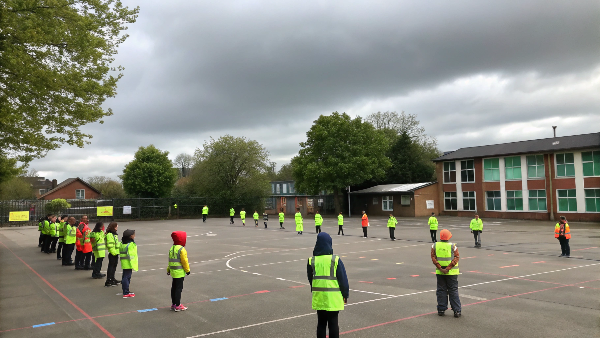
Achieving Class 3 designation involves more than just surface area of materials. It's about total visibility and recognition. Here's what Class 3 truly implies:
- Maximum Material Coverage: It requires the largest minimum areas of both fluorescent background material (for daytime visibility) and retroreflective material (for nighttime visibility).
- Full Body Outline: Class 3 garments are designed to provide visibility to more of the body. This typically means sleeves for upper body garments and full leg coverage if it's a trouser or coverall. The goal is to make the wearer instantly recognizable as a human shape, even from far away or in peripheral vision. This is often achieved by:
- A single garment like a jacket or coverall with sleeves.
- A Class 2 vest worn in combination with Class E trousers or shorts.
- 360-Degree Visibility: Like Class 2, reflective bands must encircle the torso and be placed appropriately on sleeves/legs to ensure the wearer is visible from all angles.
- Highest Risk Mitigation: It's specified for workers who face the greatest hazards. This includes high-speed traffic (over 50 mph), complex work sites where backgrounds can camouflage workers, poor sight distances, and situations where workers must focus completely on their task, not on traffic.
For our clients like Danny, supplying Class 3 garments means providing the ultimate level of protection required by regulations for specific, dangerous jobs. It's a commitment to maximum safety. For designers like Jacky, understanding Class 3 constraints (like mandatory sleeves or pairing with pants) is crucial when designing compliant workwear.
What is the OSHA standard for high-visibility clothing?
Are you concerned about meeting workplace safety rules? Failing to comply with regulations can lead to fines and endanger workers. It is important to know OSHA's requirements for high visibility.
OSHA (Occupational Safety and Health Administration) requires employers to provide and ensure the use of high-visibility garments for workers exposed to vehicular traffic hazards, particularly in construction zones (under regulation 29 CFR 1926). OSHA generally points to the ANSI/ISEA 107 standard as the benchmark for acceptable garments.
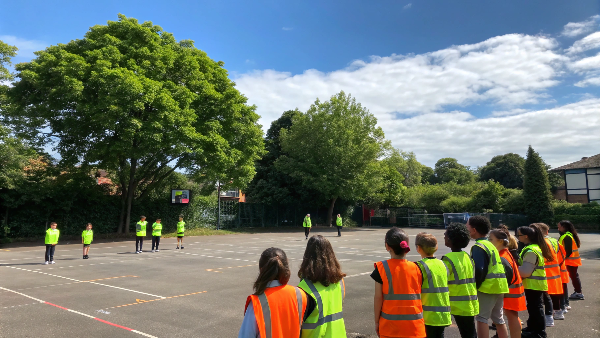
OSHA's role is to ensure safe working conditions in the United States. While OSHA itself doesn't publish its own detailed specification standard for high-visibility clothing, it mandates its use in certain situations and recognizes ANSI/ISEA 107 as the consensus industry standard for defining what constitutes effective high-visibility apparel.
Here's how it works:
- OSHA Mandate: The primary OSHA rule is within the construction standards, specifically 29 CFR 1926.651(d), which states workers exposed to public vehicular traffic must wear high-visibility garments. Other sections, like those covering flagging (29 CFR 1926.201(a)) also require it. The general duty clause (Section 5(a)(1) of the OSH Act) could also apply if a recognized hazard exists.
- Reference to ANSI/ISEA 107: OSHA letters of interpretation and compliance directives commonly refer to ANSI/ISEA 107 as providing the guidelines for appropriate garments. They expect employers to select apparel meeting the Class requirements (Class 1, 2, or 3) suitable for the specific job site hazards based on a risk assessment.
- Employer Responsibility: The employer must assess the workplace hazards (traffic speed, work zone complexity, light conditions, worker tasks) and select the appropriate Class of garment (as defined by ANSI/ISEA 107) to protect the workers.
Here’s a simple table showing the connection:
| Requirement Source | Specific Rule Example | Action Required | Compliance Standard | Garment Selection |
|---|---|---|---|---|
| OSHA | 29 CFR 1926.651(d) | Provide HVSA to workers exposed to vehicle traffic | Points to ANSI/ISEA 107 | Based on Risk (Class 1/2/3) |
| OSHA | 29 CFR 1926.201(a) | Flaggers must wear HVSA | Points to ANSI/ISEA 107 | Class 2 or 3 likely |
| OSH Act | Section 5(a)(1) General Duty | Protect workers from recognized visibility hazards | Points to ANSI/ISEA 107 | Based on Risk (Class 1/2/3) |
For B2B buyers like Danny, ensuring the garments sourced from us meet the relevant ANSI/ISEA 107 class is critical for their customers' OSHA compliance8. We provide the necessary certifications and documentation to support this.
Conclusion
Choosing the right high-visibility clothing class based on ANSI/ISEA 107, considering job risks and OSHA requirements, is essential. It directly impacts worker safety and ensures regulatory compliance for everyone involved.
-
Explore this link to understand the ANSI/ISEA 107 standard, which is crucial for ensuring safety in high-risk work environments. ↩
-
Discover the benefits of high-visibility clothing to enhance safety and compliance in various work environments. ↩
-
Learn about the performance classes of high-visibility clothing to ensure you choose the right level of protection for your needs. ↩
-
Learn about the minimum visibility requirements for safety in various work environments to ensure proper protection for workers. ↩
-
Explore this link to understand the standards and regulations for Class 1 high-visibility clothing, ensuring safety compliance in low-risk environments. ↩
-
Explore this link to understand the advantages of Class 2 high-visibility clothing for worker safety in various environments. ↩
-
Discover why 360-degree visibility is crucial for worker safety and how it enhances visibility in hazardous conditions. ↩
-
Ensuring OSHA compliance is vital for workplace safety. This resource will guide you on how to meet these important regulations. ↩

